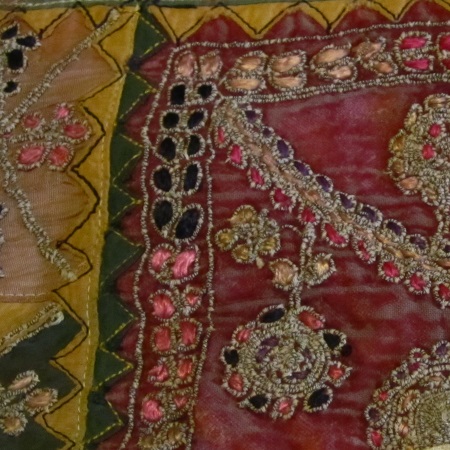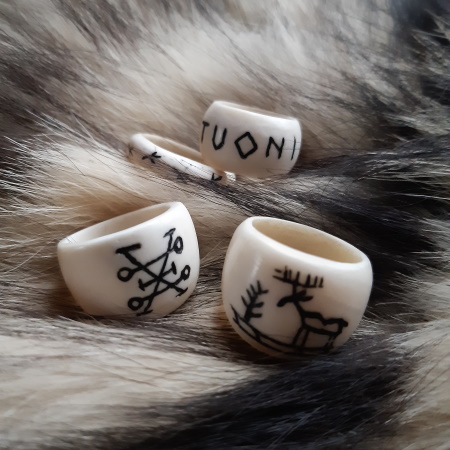I collect antique textiles, primarily Islamic, –embroidery, tapestry, weaving, quilting — as opposed to carpets which are not only more expensive but more susceptible to counterfeiting and false aging.
These cloths were primarily made for home use as clothing, hangings, floor covers, table cloths, animal covers–
Most are tribal but some, such as ikats, were more mass produced in the cities. In general, textiles arrived at the world marketplace much later than carpets primarily because of their humble purpose and in-home production — people just didn’t think they were worth gathering and displaying. It is only within about the last 40 years or so that there has been an active interest outside of museums primarily because collecting itself has become a more democratic activity — No longer is it just the rich people who can afford exquisite textiles. The mid to late twentieth century brought many young people to North Africa, Central Asia, the Middle East, some as aid workers and Peace Corp members, some as educators, some just following the hippie trail and they are responsible for the big surge in textile collecting. Link this to the great unrest, numerous tribal conflicts and all- out wars in the area, the rapid upgrading of communications and pervasive western influence and you have even more of a reason for precious antique textiles to show up at the marketplace.
I started my textile collection in the seventies when living in Iran. My husband and I were visiting Gorgon, a Turkoman stronghold near Mashad in northeastern Iran. There I purchased a pair of intricately embroidered sleeves, used to embellish the bottoms of children’s or ladies trousers. When the trousers wore out, the sleeves were simply resewn onto another pair until they became so old and worn that they were further recycled into children’s bibs or blouses, Koran covers or money pouches.. — Embroidery is a treasure and an inheritance — passed down and reworked into practical items, thus a splendid ceremonial white chyrpy ends up as pieces worked into Koran pockets or baby bibs.I continued my obsession for tribal textiles startingwith the Turkoman, proceeding to the brilliant and complex antique Uzbek and Kazak ikats, to the exquisite and complex embroidery of the Karakalpak of the Aral Sea, to the abstract, spontaneous symbols of North African henna cloths. At first,I wanted to concentrate only on Turkoman but when I discovered the splendor and complex symbolism of the other Islamic textiles, I decided not to deprive myself of them simply to limit or define myself as an expert or higher collector of a certain type of cloth.Fortunately there are no rules or laws to collecting.
Antique textiles are a microcosm of the spiritual and material culture of a people. The complex combination of dyes, weaves, fibers, shapes and symbolism reveal the layers of foreign influence and invasion,trade, religion, husbandry, technology as truly and accurately as an archeological dig uncovers layer after layer of cultural and technological evolution. Textiles are highly evolved art forms which express culture as a whole and tribe and family more specifically.They are products of love and high skill , material symbols of identity in all senses of that concept.Consider the primary artist of the tribal pieces- a young woman with a family and enormous responsibilities in husbandry, childcare, food growing, preservation and cooking , care for elders –and upon the shoulders of this woman we also have textile production of the highest degree, embroidery so intricate and fine that it cannot be reproduced, the tedious dying and weaving process, — patience and dedication beyond measure.
The woman of the family is an innovative and industrious artist – so much textile art is a tribute to her persistence and dedication. So many of the artists of so called higher arts — sculpture, painting, etc are men — but these ladies are the nameless who leave an indelible trail of devotion to their culture and family traditions.
I am astonished by the human capacity to create beauty when I gaze on these antique pieces. I am equally astonished by how much the humblest of them can tell about the history of a people. I am convinced that they provide us with a mental map of the individual who produces them — we see deeply into her consciousness as we study the fabric — it takes us into her world of complex and exacting labor or wildly colorful abstract meditation.
Holy grails and impossible to finds — Daghestani silk bridal dresses embellished in intricate nielloed pendants, rare white Turkoman chyrpies worn by older women, henna cloth with intricate and complex symbols, special items made from cloth dyed Tyrian purple from Essaouria, a Karakalpak indigo wedding dress embellished with miniscule embroidery.
Looking at these textiles is a form of meditation for me — I can see the creator, appreciate her patience and skill and lose myself in the environment from whence they come.
Storage consists of cedar chests — textiles are layered with acid free tissue — but many of them are just piled up on display on my walls, furniture, tables.
Tags: islamic textiles, textile collection of Patti Deany





